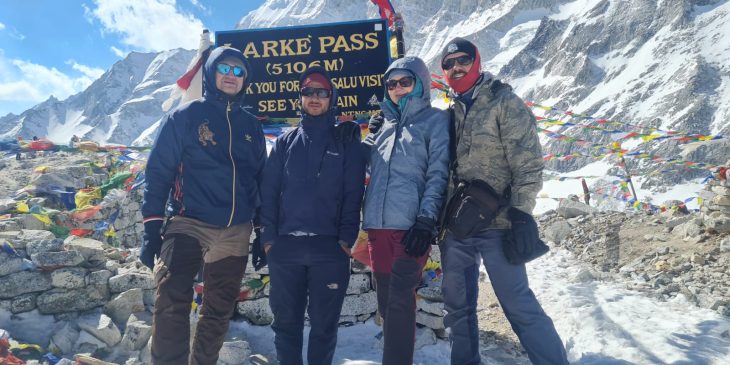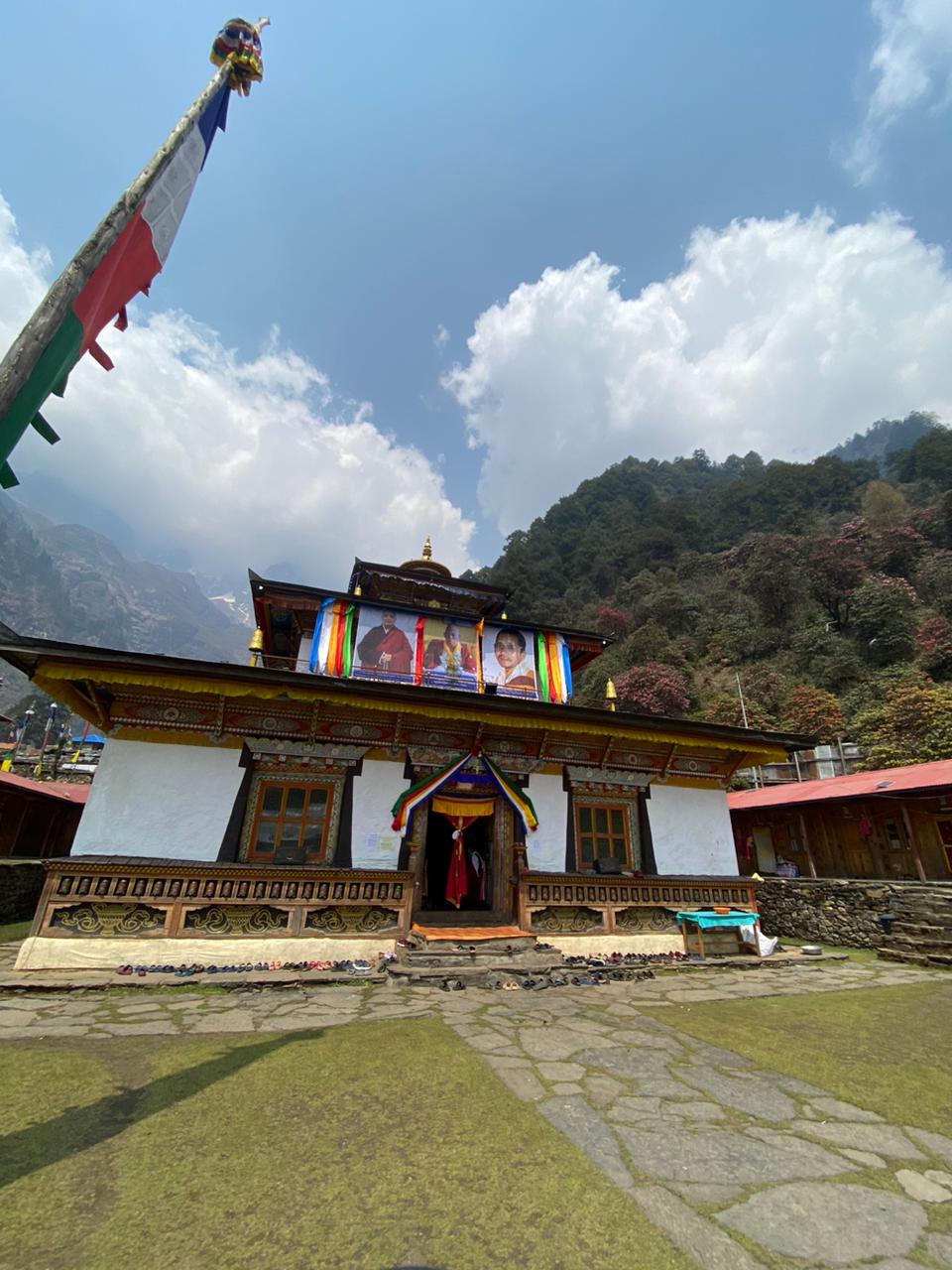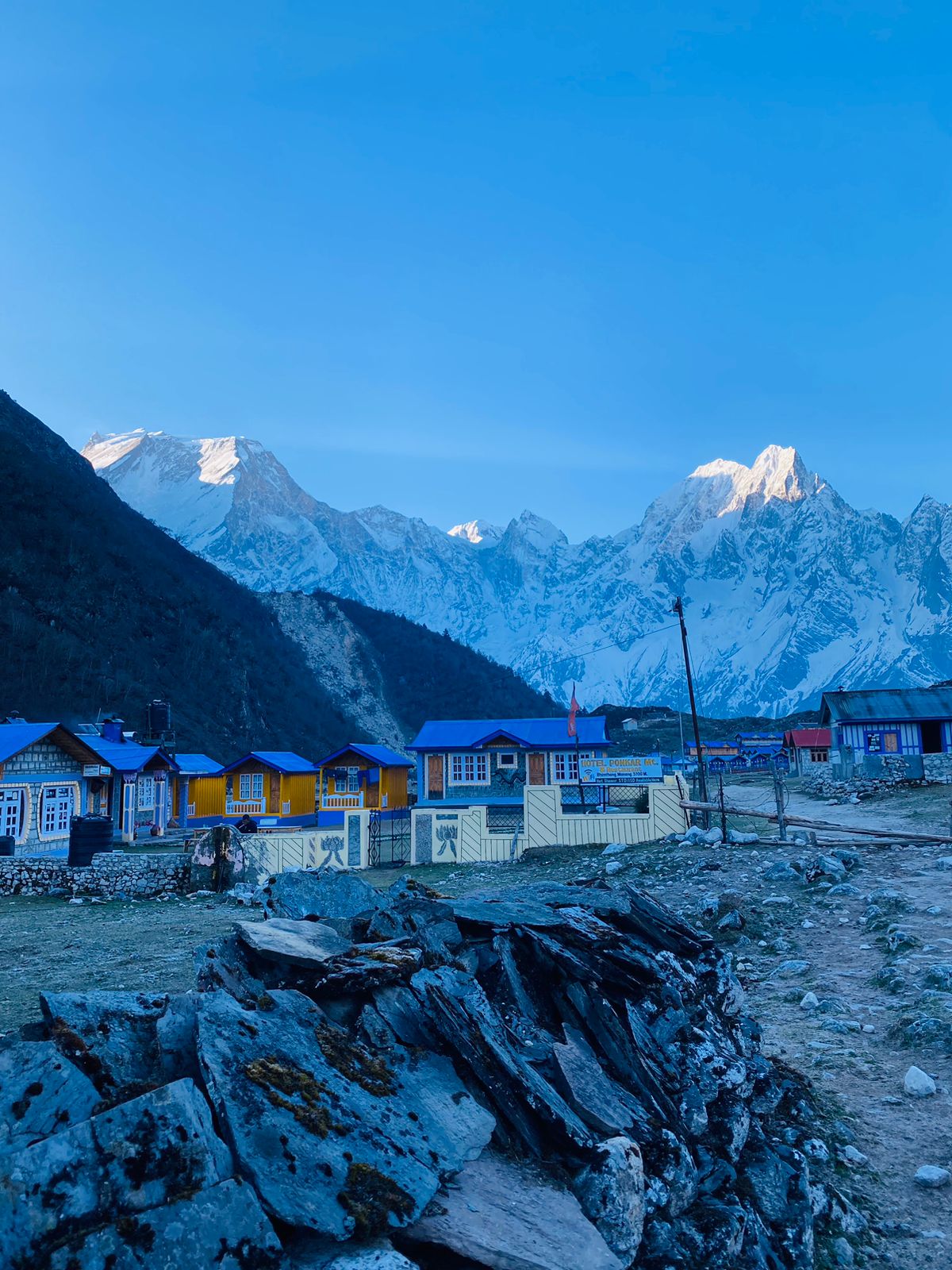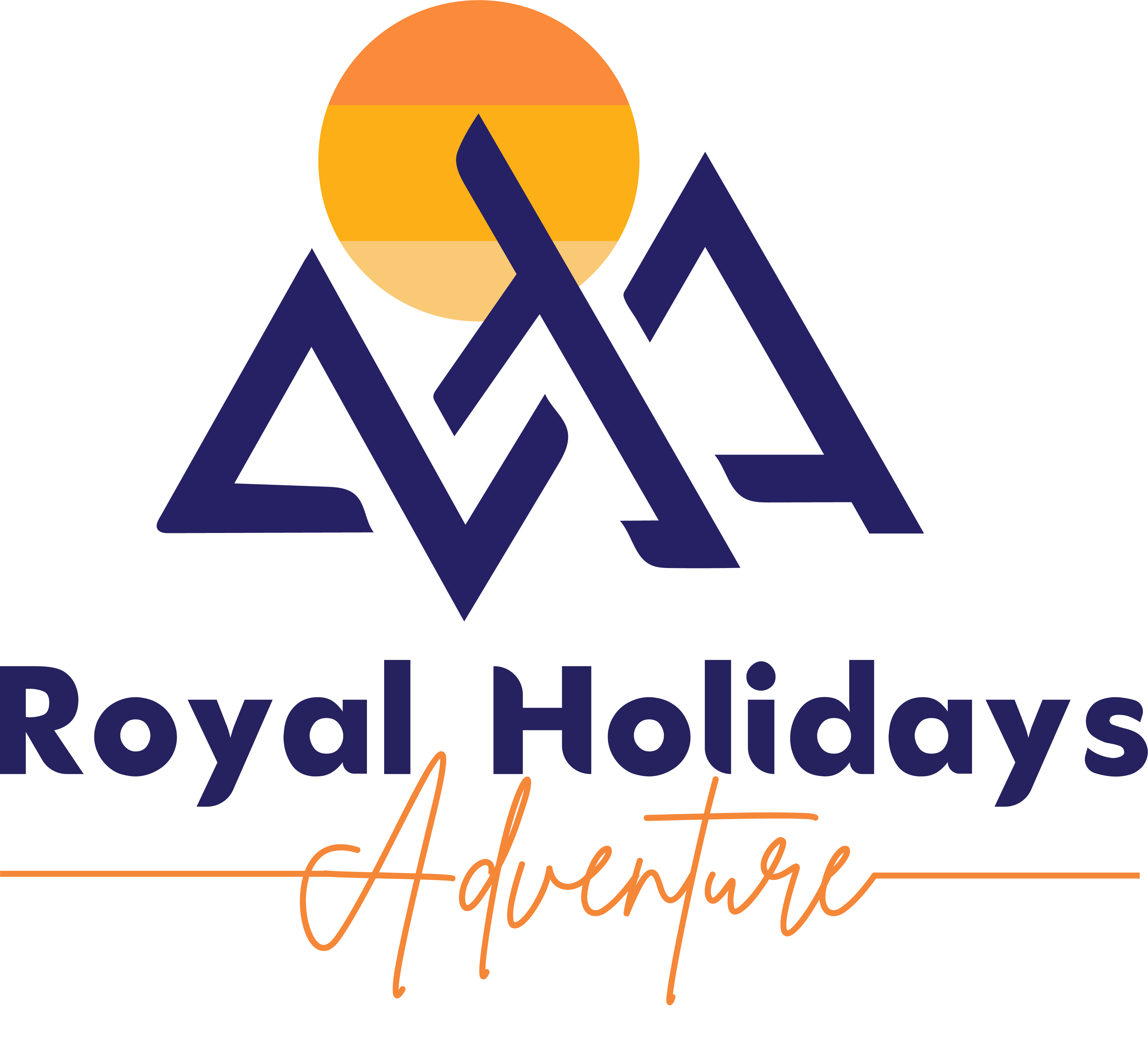
The Manaslu Circuit Trek is a popular, off-the-beaten-path trekking route in Nepal that passes through the Gurkha or Gorkha district. This trek offers a unique opportunity to explore the unexplored paths of the Himalayas. Manaslu trek guide takes you on a journey through local and indigenous villages of the region with all the information. The trail runs alongside the Budigandaki river, and you will encounter monasteries, glaciers, and awe-inspiring mountain views along the way. Manaslu trek is not only known for its scenic beauty. It is also for its significant role in supporting Nepal’s economy through tourism. However, it benefits over a million people and contributes more than 10% of the country’s GDP. The Manaslu Circuit Trek is designed for physically fit individuals who enjoy being in the solitude of nature. This 12-day journey covers a distance of 180km and culminates at the Larkeya La Pass, standing at 5,106m.
This comprehensive guide aims to walk you through the essentials of embarking on the Manaslu Circuit Trek in 2024/25. Manaslu circuit trek guide will tell you everything, you need to know about planning a trip on the Manaslu Circuit Trek. These articles cover the best time to go, what to pack, how to get permits, and where to stay. We’ll also talk about how difficult the trek is and why it’s important to be eco-friendly while you’re there. Basically, this trek is amazing and you should totally go if you love nature and adventure!
Manaslu Circuit Trek outline itinerary
| Day | Itinerary | Elevation (M) | Trek hour |
| 1 | Drive from Kathmandu to Machha Khola | 930 | 8-9 hrs |
| 2 | Trek from MachhaKhola to Jagat | 1340m | 5-6 hrs |
| 3 | Trek From Jagat to Deng | 1860m | 5-6 hrs |
| 4 | Trek from Deng to Namrung | 2600m | 5-6 hrs |
| 5 | Trek from Namrung to Sama Gaun | 3530m | 5-6 hrs |
| 6 | Acclimatization Day – Side trip to MBC (4800M) and Birendra Lkae | 3530m | 5-6 hrs |
| 7 | Trek from Samagaon to Samdo | 3880m | 3-4 hrs |
| 8 | Samdo rest day and side trip to Tibet boarder | 3880m | 6-7 hrs |
| 9 | Trek from Samdo to Dharmasala | 4900m | 4-5 hrs |
| 10 | Trek from Dharmasala to Bhimtang via Lareky la pass 5106M | 4400 | 7-8 hrs |
| 11 | Trek from Bhimtang to Dharapani | 2300m | 6-7 hrs |
| 12 | Drive from Dharapani to Kathmandu via Beshisahar | 1300m | 8-9 hrs |

Table of Contents
- 1 What Makes Manaslu Circuit Special?
- 2 Best Time for Manaslu Circuit Trek
- 3 Preparing for the Trek: Essentials Check list
- 4 Navigating the Permit Process
- 5 Understanding the Trek Difficulty Level
- 6 Accommodation Options along the Manaslu Circuit Trek
- 7 Conservation Efforts and Sustainable Trekking
- 8 Conclusion
What Makes Manaslu Circuit Special?
The Manaslu Circuit Trek is distinguished by its unique, off-the-beaten-path experience. Manaslu region provides trekkers with a closer connection to nature and an escape from more crowded trails. Nestled within the Manaslu Conservation Area, the trek showcases a rich biodiversity, including a variety of flora and fauna.
-
Environmental and Cultural Diversity
The trek spans an impressive range of elevations, starting from 830m at Machha Khola and ascending to 5,106m at Larkeya La Pass. This variation in altitude offers trekkers an array of landscapes—from lush subtropical forests in the lower regions to stark, rocky mountains as they approach higher elevations. This diverse environment not only challenges trekkers physically therefore, it also provides them with constantly changing scenic backdrops that enhance their experience.
-
Spiritual and Cultural Exploration
As trekkers ascend, they encounter a shift in cultural atmospheres—from Hindu-dominated settlements in the lower regions to predominantly Buddhist communities in the higher elevations. This transition is marked by peaceful monasteries, vibrant prayer wheels, and ancient mani walls, enriching the trek with spiritual and cultural depth
-
Remote Villages and Indigenous Cultures
One of the trek’s highlights is the opportunity to visit remote Nepali villages, where trekkers can immerse themselves in traditional lifestyles, architecture, and local customs. The Tsum Valley, near Tibet is particularly notable. It is considered sacred by the indigenous Tsumba community and features stones inscribed with prayers and depictions of Buddhist deities.
-
Breathtaking Natural Beauty
The Manaslu Circuit Trek offers unparalleled views of Mount Manaslu, the world’s eighth-highest mountain along with other spectacular peaks such as Annapurna II and Himlung Himal. The path leads through varied landscapes, from verdant forests to vast alpine glaciers, providing trekkers with stunning vistas and ample opportunities for photography.
-
Challenging High-Altitude Passes
The trek’s pinnacle, Larkeya La Pass, sits at an elevation of 5,106 meters. It presents a challenging yet rewarding experience for those who reach it, offering panoramic views of snow-capped mountains and a profound sense of accomplishment.
In conclusion, the Manaslu Circuit Trek is not just a physical journey, it is also voyage through diverse ecosystems, rich cultures, and breathtaking landscapes, making it a truly special experience for trekkers worldwide
Best Time for Manaslu Circuit Trek
The Manaslu Circuit Trek offers varied experiences throughout the year, each season bringing its unique atmosphere and challenges. Understanding the monthly and seasonal variations in weather can significantly enhance your trekking experience.
Optimal Trekking Seasons
- Spring (March to May): Spring is one of the most favorable times to trek the Manaslu Circuit. During these months, the weather is generally stable and warms enough for comfortable trekking. The landscape becomes particularly vibrant in April, with blooming flowers and lush greenery.
- Autumn (September to November): Like spring, autumn provides stable weather conditions and clear skies, ideal for trekking and enjoying excellent views of the mountainous terrain. October is considered the best month for trekking due to its mild weather and Clear Mountain views.
Monthly Weather Conditions
- March: The beginning of spring brings chillier days with temperatures ranging from 8 to 10 degrees Celsius during the day. Night temperature dropping to between -5 and 5 degrees Celsius.
- April: Daytime temperatures rise to between 10 and 15 degrees Celsius, creating pleasant trekking conditions. Night temperatures are cooler, ranging from 0 to 8 degrees Celsius.
- May: As spring ends, temperatures reach 20 to 31 degrees Celsius during the day. Night temperatures remain between 5 and 12 degrees Celsius.
- September: With the monsoon season over, the weather stabilizes, providing excellent trekking conditions with daytime temperatures between 15 and 21 degrees Celsius. During the evening and night time the temperature would be 7 degrees Celsius.
- October: Comfortable daytime temperatures of 10 to 15 degrees Celsius and night temperatures dropping to between -2 and 5 degrees Celsius make October ideal for trekking.
- November: Cooler yet clear conditions prevail, with daytime temperatures of 5 to 13 degrees Celsius and night temperatures falling to between -6 and 5 degrees Celsius, offering crisp and enjoyable trekking weather.
Considerations for Off-Peak Trekking
- Monsoon (June to August): The onset of the monsoon brings lush landscapes and fewer travelers, offering a more solitary experience despite the potential for rain. August, in particular, sees fewer tourists, which might appeal to those seeking solitude.
- Winter (December to February): Trekking during winter months is challenging due to cold conditions, with December featuring daytime temperatures of 8 to 12 degrees Celsius and night temperatures dropping significantly below freezing. February, while still cold, begins to warm slightly, making late February a viable option for early spring trekkers.
The trek requires a minimum of two people for permit acquisition, and while it is possible to trek during any of the months from March to June and September to November, planning according to these weather patterns and temperatures will ensure a more comfortable and visually rewarding experience.

Preparing for the Trek: Essentials Check list
Before setting out on the Manaslu Circuit Trek, ensuring you have all necessary items can make the difference between a comfortable journey and a challenging ordeal. Here’s a detailed checklist of essentials you should pack:
Clothing and Footwear
- Headwear: Includes items such as a brimmed hat or sun cap, sunglasses, and a knit hat for colder temperatures.
- Upper Body Wear: Layer up with lightweight thermal tops, a long or short sleeve polypropylene shirt, and a fleece pullover. Don’t forget a waterproof jacket and a down jacket for higher altitudes.
- Handwear: Pack both lightweight gloves and heavier gloves or mittens for the cold.
- Bodywear: Bring hiking pants, fleece pants for warmth, light thermal trousers, and comfortable underwear. Hiking shorts are optional for warmer days.
- Footwear: Essential items include trekking boots, hiking socks, trekking sandals for more casual wear, and gaiters to keep debris out of your shoes.
Gear and Equipment
- Navigation Tools: Maps, a compass, and a GPS device will help keep you on the right path.
- Lighting: A headlamp or flashlight with extra batteries is crucial for those early morning starts or late evening treks.
Health and Hygiene
- First-Aid Kit: Include necessary medications, plasters, bandages, and a skin blister repair kit.
- Personal Hygiene Items: Don’t forget a toothbrush, toothpaste, quick-drying towel, multi-purpose soap, and hand sanitizer.
- Water Treatment: Bring water purification tablets or a water filter to ensure you can safely drink local water.
Miscellaneous
- Documentation: Keep your passport, visa, travel insurance, and necessary permits handy. Also, carry photocopies and keep a digital copy on your phone.
- Money Matters: You must have enough cash in Nepalese rupee for the expenses during the trek, because in the mountain they don’t accept foreign currency and credit card. But other expenses in Kathmandu you can pay by card or foreign currency.
- Communication and Power: A power bank and universal adapter are essential for keeping your devices charged.
Optional Items
- Comfort and Entertainment: Consider packing a book, diary, or small games for downtime.
- Additional Gear: Depending on the season and your comfort level, items like crampons, binoculars, and a camera can enhance your trekking experience.
Environmental Considerations
To minimize your environmental impact during the trek, opt for reusable water bottles and refuse plastic bags and straws. Using water purification tablets instead of buying bottled water can significantly reduce plastic waste.
Physical Preparation
Physical fitness is crucial for the Manaslu Circuit Trek. It’s recommended to engage in regular physical activity well before your trek to ensure you can handle the demands of long trekking days and high-altitude climbs.

Navigating the permit process for the Manaslu Circuit Trek involves understanding and acquiring several specific permits due to the area’s protected status and proximity to international borders. Here’s a step-by-step guide to ensure you have all necessary documentation for a hassle-free trekking experience.
Required Permits
- Manaslu Restricted Area Permit (RAP): Essential due to the trek’s proximity to the Tibetan border. The cost varies seasonally; $100 for the first week and $15 for each additional day during the peak seasons of September to November, and $75 for the first week with $10 for each additional day from December to August.
- Manaslu Conservation Area Permit (MCAP): This permit supports the conservation efforts in the Manaslu area. It costs NPR 3000 (approximately US$ 30) for non-SAARC nationals and NPR 1000 (US$ 10) for SAARC nationals.
- Annapurna Conservation Area Permit (ACAP): Since the trek passes through part of the Annapurna Conservation Area, this permit is also required. The fees are the same as for the MCAP.
Acquisition Process
- Agency Involvement: Permits can only be issued through a licensed trekking agency in Nepal. This is mandatory due to the restricted nature of the Manaslu region .
- Documentation Needed: Trekkers must provide several documents to obtain these permits, including two passport-sized photos, a scanned photograph, a photocopy of a valid passport, travel insurance papers that include helicopter evacuation, and a valid Nepal tourist visa .
Understanding the Trek Difficulty Level
The Manaslu Circuit Trek, recognized for its moderate to challenging difficulty, demands a well-rounded preparation from trekkers. Here are the key factors contributing to its difficulty:
Altitude and Acclimatization
- High Altitude Challenges: The trek reaches a staggering elevation of 5,160 meters at Larkya La Pass, making altitude sickness a significant concern.
- Acclimatization Strategy: An incorporating rest day into the itinerary is crucial for acclimatization and preventing altitude sickness. This allows the body to adapt to the high altitude gradually.
Terrain and Distance
- Rugged Terrain: Trekkers will navigate through steep and rough paths. The terrain includes remote hillsides that require good physical strength and stamina.
- Trek Length: Covering approximately 180 kilometers, the trek typically takes between 10 to 12 days to complete, adding to its challenging nature.
Weather Conditions
- Extreme Temperatures: Weather conditions can be harsh, with temperatures frequently dropping below freezing at night, which adds an additional layer of difficulty.
Accommodation and Logistics
- Basic Accommodations: Facilities along the trek are basic and limited. Trekkers should be prepared to adapt to these conditions, which may not offer the comfort of typical tourist accommodations.
Physical and Mental Preparation
- Comprehensive Preparation: Ensuring physical fitness and mental readiness is essential. This preparation helps trekkers handle long days of walking and the psychological demands of a prolonged high-altitude trek.
Guided Trekking
- Professional Guidance: Hiring a licensed guide from a reputable trekking company is recommended. This support can greatly enhance safety and trekking experience.
These factors collectively contribute to the trek’s reputation as a moderately challenging adventure, offering both physical and mental tests that reward trekkers with unparalleled natural beauty and cultural richness.
Accommodation Options along the Manaslu Circuit Trek
 Teahouses are the primary accommodation choice along the Manaslu Circuit Trek, providing essential shelter and amenities for trekkers traversing this remote Himalayan trail. These teahouses offer basic yet functional facilities, including food services and sleeping arrangements, typically featuring twin-sharing rooms and communal bathrooms. In lower altitudes, single rooms may be available for an additional charge, though this option becomes scarce as one ascends to higher elevations.
Teahouses are the primary accommodation choice along the Manaslu Circuit Trek, providing essential shelter and amenities for trekkers traversing this remote Himalayan trail. These teahouses offer basic yet functional facilities, including food services and sleeping arrangements, typically featuring twin-sharing rooms and communal bathrooms. In lower altitudes, single rooms may be available for an additional charge, though this option becomes scarce as one ascends to higher elevations.
Cost Variation by Altitude and Season
The cost of staying in these teahouses varies significantly with altitude and season. At lower elevations, prices range from $3 to $5 per night during peak seasons, and drop to $2 to $3 during the off-season. Conversely, at higher altitudes, the cost increases to between $7 and $10 in peak seasons and decreases to between $5 and $7 in the off-season.
Amenities in Teahouses
Most teahouses along the trek are equipped with Wi-fi and telecommunication services, ensuring that trekkers can stay connected even in remote areas . The food provided is wholesome and caters to both vegetarian and non-vegetarian preferences, crucial for maintaining energy during the strenuous trek.
Conservation Efforts and Sustainable Trekking
Principles of Responsible Tourism
Responsible tourism is essential for preserving the natural beauty and cultural heritage of the Manaslu Circuit Trek. By adhering to the following principles, trekkers can ensure their impact is positive and sustainable:
- Environmental Preservation: Trekkers are encouraged to stick to designated paths to minimize their ecological footprint, conserve water, and avoid harming the local environment.
- Community-Based Tourism: Supporting community-based tourism enhances local economic benefits by creating jobs and promoting cultural exchanges. This involves dining at local restaurants and purchasing local products, which helps sustain the community’s economy.
- Cultural Respect: Understanding and respecting local customs and traditions is crucial. Trekkers should dress modestly, seek permission before photographing individuals, and engage with locals respectfully.
- Wildlife Conservation: It is vital to preserve the area’s biodiversity by not disturbing wildlife or their habitats and avoiding the purchase of products made from endangered species.
Sustainable Practices
Implementing sustainable practices during the trek not only enhances the trekking experience but also contributes to the conservation efforts:
- Waste Management: Practicing responsible waste management by reducing, reusing, and recycling helps maintain the cleanliness and ecological balance of the Manaslu region.
- Support Local Enterprises: Engaging with and supporting locally owned businesses, such as teahouses and guide services, contributes directly to the local economy and reduces the carbon footprint associated with long supply chains.
- Participation in Conservation Efforts: Volunteering for or contributing to projects like the Manaslu Conservation Area Project (MCAP) and the Annapurna Conservation Area Project (ACAP) can make a significant positive impact on the region.
By choosing responsible trekking operators and adhering to sustainable trekking practices, visitors can significantly contribute to the preservation of the region’s natural and cultural assets, ensuring that the Manaslu Circuit remains a pristine and welcoming environment for all who venture its paths.
Conclusion
Through the exploration of the Manaslu Circuit Trek, this guide has aimed to prepare trekkers for a journey marked by breathtaking natural beauty, challenging terrain, and rich cultural encounters. The trek presents a unique opportunity to immerse oneself in the remote and pristine environment of the Nepali Himalayas, offering a blend of adventure, solitude, and spiritual rejuvenation. It stands as a testament to the enduring spirit of exploration and the deep connections that can be forged with nature and local communities. By emphasizing responsible trekking practices and conservation efforts, the guide underlines the importance of preserving this treasure for future generations to cherish.
As we conclude, it’s important to reflect on the journey that awaits on the Manaslu Circuit Trek—a journey not just through diverse landscapes but through the heart of Nepali culture and tradition. Trekkers are reminded to approach this adventure with respect, empathy, and a commitment to sustainable travel practices. The insights and preparations shared here are meant to equip you, the trekker, for an enriching experience that extends beyond the physical trek, into an exploration of self and the natural world. Let the Manaslu Circuit Trek be a reminder of the beauty and resilience of our planet, and the role we play in its protection and preservation.




















